
[caption id="InBritainTheseDays_img1" align="aligncenter" width="133"]

GETTY IMAGES
[caption id="InBritainTheseDays_img2" align="aligncenter" width="1024"]

GETTY IMAGES
[caption id="InBritainTheseDays_img3" align="aligncenter" width="348"]
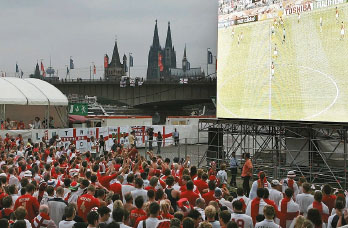
GETTY IMAGES
CELEBRATING THE WORLD CUP
The news in the rest of the world this past summer was the World Cup. Across England, the flag of St. George was everywhere. Every TV in pubs and shop fronts everywhere followed every game. There were pubs with projection TVs, and some ran World Cup parties throughout the monthlong tournament. At least a full third of the television news 24/7 was World Cup related. Anyone who is a fan from any of the 32 countries flew the flag in show of support everywhere. Every goal scored in every game was “breaking news.” Every weather forecast detailed the weather in each of the German cities hosting games. The changing handicaps and odds of every game were in every bookie’s window. The quadrennial football event dwarfed the Olympics in world attention—everywhere but in America.
The England team entered the summer competition with a strong side, among the half-dozen teams given a realistic chance to win the world’s soccer-fest held this year in Germany. In round-robin group play, England emerged 2-0-1 to win its group and advance to the 16-team knock-out tournament play. England fans and global football enthusiasts complained that England’s play was lackluster, however, and lacked the competitive and offensive spark they would need. In the round of 16, England squeaked by Ecuador 1-0 on a free kick by soccer legend and team captain David Beckham.
Alas, England’s hopes for winning the cup met a sad fate at the feet of Portugal in the quarterfinals. More than four out of five television sets across Britain were tuned to watch as England and Portugal played to a 0-0 tie at the end of regulation time and after two 15-minute overtime periods. Portugal ended up advancing on penalty kicks, and England went home to lick its wounds. England fans will be processing the results for months. Veteran BH writer Jean Paschke was traveling in England through the tournament. Jean speaks for a long-suffering minority, however, when she writes, “If I never see another red and white flag, I’ll die content.”
In case you managed to miss it, the World Cup was won by Italy, who beat France on penalties after a 1-1 draw.
THE ROYAL PUBLIC FINANCES
Queen Elizabeth and the Royal Family cost the British taxpayer 62p per person last year. The Royal Public Finances were recently published for 2005-06, revealing the cost of what is termed “Head of State expenditure” to total £37.4 million for the fiscal year.
There are four categories of expenditure for the Royal Family. The Queen’s Civil List is the funding allowance of Parliament for the staff costs and expenses of Her Majesty’s official Household. The Parliamentary Annuity is a modest allowance to the Duke of Edinburgh for official expenses. Grants-in-aid are expenses borne by varying departments of government on behalf of the Royal Household. The cost of official royal travel by air or rail, for instance, is borne by the Department of Transport.
Finally, there is a broad category labeled “Expenditure met directly by Government Departments and the Crown Estate.” Line items here include equerries and orderlies seconded from the Armed Forces, overseas visits to Canada and Malta, the administration of honors and sundry ceremonial occasions in the Royal year.
Keeper of the Privy Purse Alan Reid regards the Queen and Royal Family as good value: “Given this is a World Cup year, 62p would buy you a ticket for one minute of England’s game against Portugal.”
UNEARTHING THE ROMANS
In a Cotswolds gravel quarry, just a few miles east of Cirencester, archaeologists have uncovered a large Roman cemetery. The find is unusual because there were no large Roman settlements known to have existed in the area 1,600 years ago. Alex Smith, the project manager for Oxford Archaeology, explains, “We believe a small Roman farm lies immediately to the west, and it may be that the cemetery acted as a communal burial ground for the local rural population.”
More than 100 people are believed to be buried at the site, apparently interred according to their ages, with children’s bodies in a section of their own. Archaeologists are hopeful that the significant find will reveal more of the people and way of life in the Cotswolds at the time of the Roman withdrawal from Britain. Cirencester itself, eight miles west of the Fairford cemetery, was the Roman provincial capital of Corinium, once the second largest city in Roman Britain.
ENGLAND’S CRUMBLING CHURCHES
[caption id="InBritainTheseDays_img4" align="aligncenter" width="917"]
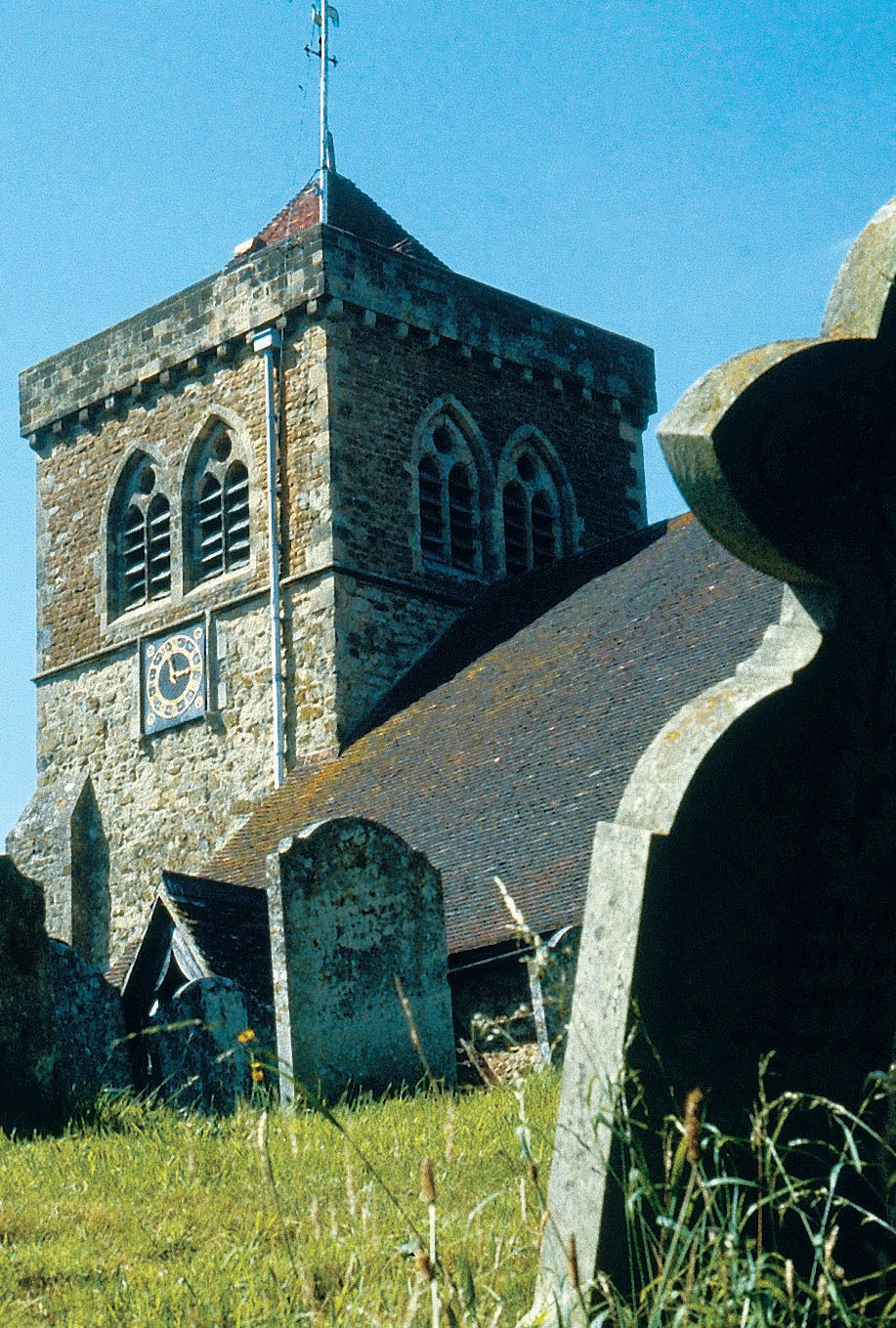
DANA HUNTLEY
English Heritage has launched a new initiative aimed at gaining increased Government aid for the infrastructure of England’s decaying church buildings. The preservation and conservation body has identified 1,100 buildings as vulnerable and estimates the cost of restoration to be nearly £1 billion. Local, often rural, parishes with small congregations find it increasingly difficult to maintain their often-medieval churches.
Supported by faith groups and celebrities alike, the new campaign, called Inspired, hopes to gain Government help to provide a variety of support services to aid local parishes preserve the fabric of their ancient and historic buildings. As Simon Thurley, EH chief executive, commented, “With pubs and post offices disappearing and social problems growing, these buildings often provide the only remaining physical, cultural and spiritual focus for a community.”
IMMIGRATION WOES?
Local councils across England are sounding the alarm over unprecedented in-migration that is severely straining local services. A massive influx of migrant workers from Eastern Europe have caused housing shortages and led to overcrowding problems. Schools, hospitals and transport systems are finding it difficult to bear the additional demands in several areas of Britain.
Britain was the only major European economy to allow unlimited access to its labor market to new European Union (EU) citizens from Eastern Europe. Initial estimates from the Home Office suggested 13,000 workers might take advantage of the opportunity. In fact, when the official figures are next published it’s believed the total will be more than 400,000 immigrants from Poland, the Baltic States and Central Europe. The South East and East Anglia have been the most popular areas for the new arrivals. Crewe, however, a town of 48,000 in Cheshire, reported last year receiving 3,000 new arrivals from Poland.
While ministers have defended the policy, saying that European workers have provided a source of cheap labor, it appears that new arrivals are forcing down wages for indigenous workers—and that unemployment is rising. It remains to be seen how the Labour Government will respond to this new challenge.
CAPTAIN COOK’S ENDEAVOUR FOUND OFF NEWPORT
[caption id="InBritainTheseDays_img5" align="aligncenter" width="678"]
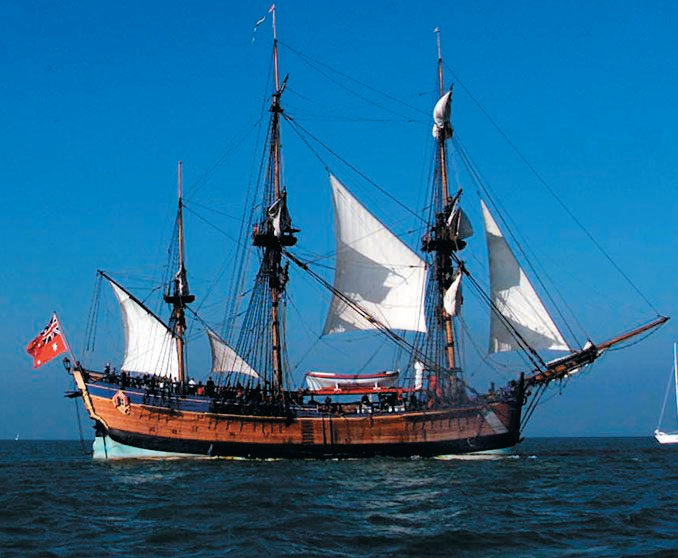
CHRIS ISON/PA/EMPICS
The ship in which Captain James Cook made his most famous voyage of discovery and claimed New Zealand and Australia for the British crown has been found lying 20 feet below the surface some 300 yards from shore near the harbor entrance in Newport, R.I.
The 105-foot barque was a converted collier that Cook had chosen for his first circumnavigation of the world in 1768 because of its rugged sailing qualities rather than its speed or firepower. Its usefulness to the Admiralty was limited, however, and the barque was sold back into the merchant service in 1776. Renamed Lord Sandwich, the ship transported Hessian mercenaries to the Colonies at the beginning of the Revolution. Later, it became a prison ship housing American rebels.
In 1778, when the Americans and French prepared to attack Newport, the British feared the deep-water channel outside the harbor would let the French navy close enough to cannonade the town. Endeavour was one of 13 ships that were scuttled outside the harbor entrance to keep the French at a distance.
Marine archaeologists expect that excavation of Captain Cook’s ship will be both expensive and slow because the ship’s remains are so fragile.
THE LONDON STONE
From at least the Middle Ages and probably much earlier, the mysterious London Stone has been among the City’s greatest relics. A breadbox-size chunk of limestone, the stone’s long history goes back at least as far as Roman London. One theory proposes it was originally a Roman distance marker, but it could be much older, and no shortage of exotic legends about the stone exists. William Blake linked the stone to the Celtic druids, and until recent centuries it was thought to have unnamed magic powers and properties.
Whatever its origins, the London Stone has miraculously survived 20 centuries of the City’s fires, wars and constant rebuilding. While the stone has had many homes over the years, from Victorian times it rested in the wall of St. Swithin’s Church. The London Stone survived the Blitz intact; St. Swithin’s didn’t.
The stone’s ignoble home most recently has been in the walling of a sporting goods shop. The current structure housing the stone is scheduled for demolition in a redevelopment project. Plans call for the limestone block to be moved into the Museum of London for safekeeping. Odds are the London Stone will outlive the MOL.
[caption id="InBritainTheseDays_img6" align="aligncenter" width="1024"]
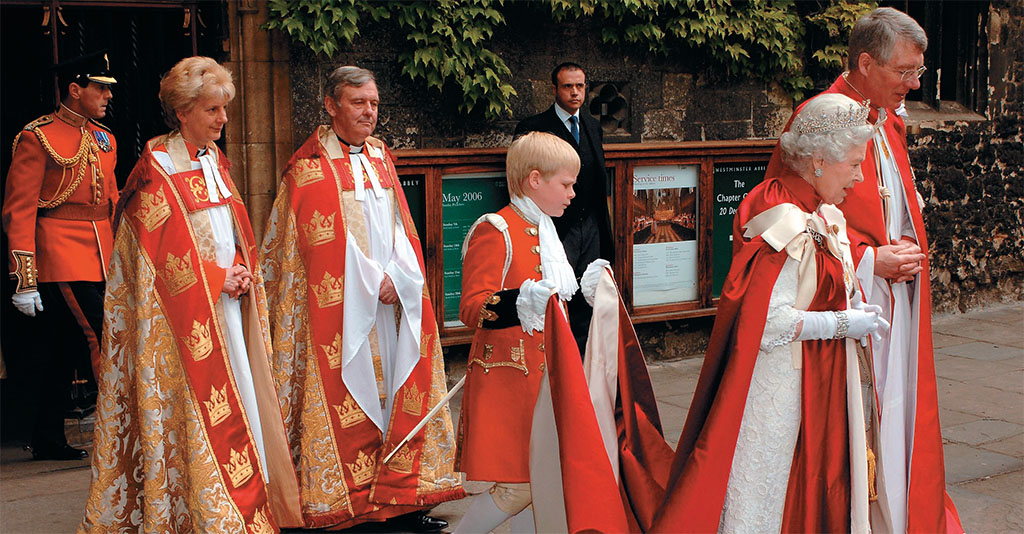
GETTY IMAGES
[caption id="InBritainTheseDays_img7" align="aligncenter" width="676"]
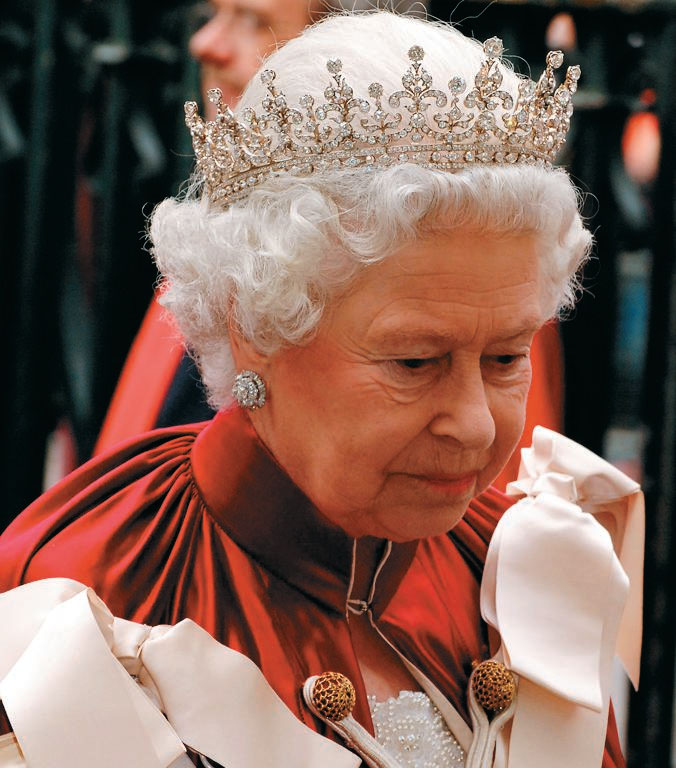
GETTY IMAGES
KNIGHTS GRAND CROSS AT THE ABBEY
At Westminster Abbey, seven Knights Grand Cross of the Most Honourable Order of the Bath were installed recently before the Queen. Dating back to the 12th century, the Order of the Bath was formally instituted as a military order in 1725 by King George I. Each of the seven long-retired military officers newly installed as Knights of the Bath were granted their knighthoods (GCB) back in the 1980s. While there are 120 Knights or Dames Grand Cross, however, there are only 34 stalls in the Abbey’s Lady Chapel. To take their place with banner and crest, knights must join a queue waiting until previous occupants have died.
The Prince of Wales, who is the Grand Master of the Order, presides over a formal installation but once every four years. The Sovereign traditionally attends every other ceremony. This year’s honorees, whose ages range from 76 to 81, all waited between 21 and 24 years for their big day. During the traditional ceremony, the Queen knelt before the altar to make an offering of gold and silver, symbolizing the surrender of earthly treasure. The elderly knights took the ancient oath that pledges them to defend maidens, widows and orphans.





Comments